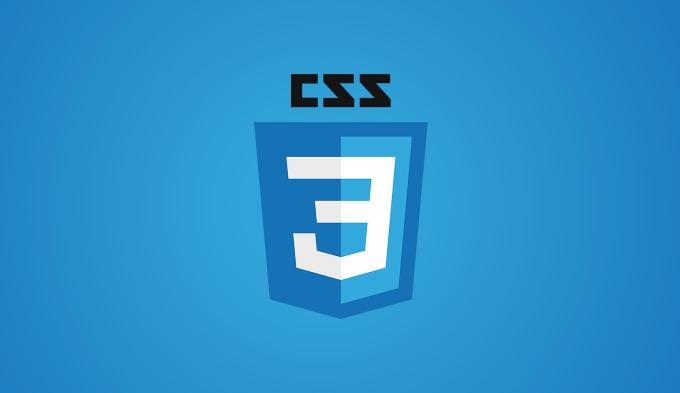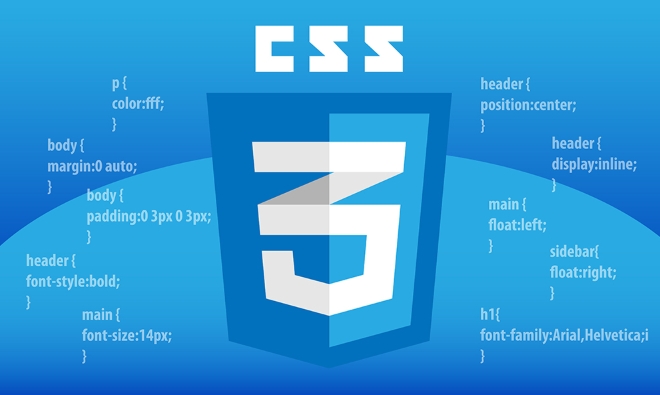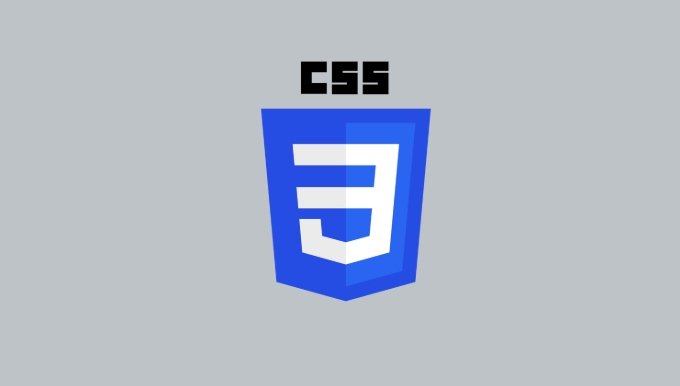Create an HTML structure, share a list of links with Facebook, Twitter, LinkedIn, and WhatsApp, and replace YOUR_URL and YOUR_TITLE as actual URL encoded values; 2. Use CSS Flexbox layout design styles to set exclusive background colors, hover effects, and responsive spacing for each platform; 3. Use media queries to achieve line breaks and adaptive button widths on small screens; 4. Optionally introduce Font Awesome icons to enhance visual effects and ensure CDNs are loaded correctly. Finally, a lightweight, third-party script-free, and responsive social sharing bar is realized to improve the efficiency of content dissemination without affecting website performance.

Adding a social media sharing bar to your website is a great way to encourage visitors to share your content. With just HTML and CSS, you can create a clean, responsive sharing bar without relying on third-party scripts. Here's how to do it step by step.

1. Structure the HTML
Start by creating a simple list of social media platforms. Each link will point to a sharing URL for that platform, with parameters for your page's title and URL.
<div class="social-share-bar"> <span>Share this:</span> <a href="https://www.facebook.com/shareer/shareer.php?u=YOUR_URL" target="_blank" class="share-btn facebook">Facebook</a> <a href="https://twitter.com/intent/tweet?url=YOUR_URL&text=YOUR_TITLE" target="_blank" class="share-btn twitter">Twitter</a> <a href="https://www.linkedin.com/sharing/share-offsite/?url=YOUR_URL" target="_blank" class="share-btn linkedin">LinkedIn</a> <a href="https://api.whatsapp.com/send?text=YOUR_URL" target="_blank" class="share-btn whatsapp">WhatsApp</a> </div>
Replace YOUR_URL and YOUR_TITLE with actual URL-encoded values from your page (you can do this dynamically with server-side code or JavaScript).

2. Style with CSS
Now apply clean, modern styles. We'll use flexbox for layout, custom colors for each platform, and smooth hover effects.
.social-share-bar {
display: flex;
align-items: center;
gap: 10px;
padding: 15px;
font-family: Arial, sans-serif;
font-size: 14px;
}
.social-share-bar span {
color: #333;
margin-right: 10px;
}
.share-btn {
padding: 8px 12px;
color: white;
text-decoration: none;
border-radius: 5px;
font-size: 14px;
transition: opacity 0.3s ease;
}
.share-btn:hover {
opacity: 0.9;
transform: translateY(-2px);
}
.facebook { background-color: #3b5998; }
.twitter { background-color: #1da1f2; }
.linkedin { background-color: #0077b5; }
.whatsapp { background-color: #25d366; }3. Make It Responsive
On smaller screens, the bar might overflow. Use a media query to adjust spacing or switch to vertical layout if needed.

@media (max-width: 480px) {
.social-share-bar {
flex-wrap: wrap;
}
.share-btn {
flex: 1;
min-width: 100px;
text-align: center;
}
}4. Optional: Add Icons
For a more visual appeal, include icons using Font Awesome or SVGs.
Example with Font Awesome:
<a href="..." class="share-btn facebook"> <i class="fab fa-facebook-f"></i> </a>
And update CSS to style the icon:
.share-btn i {
width: 18px;
text-align: center;
} Don't forget to include the Font Awesome CDN in your <head> :
<link rel="stylesheet" href="https://cdnjs.cloudflare.com/ajax/libs/font-awesome/6.0.0/css/all.min.css">
Final Notes
- Always test sharing links — some platforms may require URL encoding.
- Avoid loading external widgets to keep your site fast and private.
- You can enhance this further with JavaScript to dynamically populate URLs and titles.
Basically, a clean, lightweight sharing bar comes down to semantic HTML, smart CSS, and properly formatted social sharing URLs. No heavy libraries needed.
The above is the detailed content of How to create a social media sharing bar with CSS?. For more information, please follow other related articles on the PHP Chinese website!

Hot AI Tools

Undress AI Tool
Undress images for free

Undresser.AI Undress
AI-powered app for creating realistic nude photos

AI Clothes Remover
Online AI tool for removing clothes from photos.

Clothoff.io
AI clothes remover

Video Face Swap
Swap faces in any video effortlessly with our completely free AI face swap tool!

Hot Article

Hot Tools

Notepad++7.3.1
Easy-to-use and free code editor

SublimeText3 Chinese version
Chinese version, very easy to use

Zend Studio 13.0.1
Powerful PHP integrated development environment

Dreamweaver CS6
Visual web development tools

SublimeText3 Mac version
God-level code editing software (SublimeText3)

Hot Topics
 CSS tutorial for creating loading spinners and animations
Jul 07, 2025 am 12:07 AM
CSS tutorial for creating loading spinners and animations
Jul 07, 2025 am 12:07 AM
There are three ways to create a CSS loading rotator: 1. Use the basic rotator of borders to achieve simple animation through HTML and CSS; 2. Use a custom rotator of multiple points to achieve the jump effect through different delay times; 3. Add a rotator in the button and switch classes through JavaScript to display the loading status. Each approach emphasizes the importance of design details such as color, size, accessibility and performance optimization to enhance the user experience.
 Addressing CSS Browser Compatibility issues and prefixes
Jul 07, 2025 am 01:44 AM
Addressing CSS Browser Compatibility issues and prefixes
Jul 07, 2025 am 01:44 AM
To deal with CSS browser compatibility and prefix issues, you need to understand the differences in browser support and use vendor prefixes reasonably. 1. Understand common problems such as Flexbox and Grid support, position:sticky invalid, and animation performance is different; 2. Check CanIuse confirmation feature support status; 3. Correctly use -webkit-, -moz-, -ms-, -o- and other manufacturer prefixes; 4. It is recommended to use Autoprefixer to automatically add prefixes; 5. Install PostCSS and configure browserslist to specify the target browser; 6. Automatically handle compatibility during construction; 7. Modernizr detection features can be used for old projects; 8. No need to pursue consistency of all browsers,
 What is the difference between display: inline, display: block, and display: inline-block?
Jul 11, 2025 am 03:25 AM
What is the difference between display: inline, display: block, and display: inline-block?
Jul 11, 2025 am 03:25 AM
Themaindifferencesbetweendisplay:inline,block,andinline-blockinHTML/CSSarelayoutbehavior,spaceusage,andstylingcontrol.1.Inlineelementsflowwithtext,don’tstartonnewlines,ignorewidth/height,andonlyapplyhorizontalpadding/margins—idealforinlinetextstyling
 Styling visited links differently with CSS
Jul 11, 2025 am 03:26 AM
Styling visited links differently with CSS
Jul 11, 2025 am 03:26 AM
Setting the style of links you have visited can improve the user experience, especially in content-intensive websites to help users navigate better. 1. Use CSS's: visited pseudo-class to define the style of the visited link, such as color changes; 2. Note that the browser only allows modification of some attributes due to privacy restrictions; 3. The color selection should be coordinated with the overall style to avoid abruptness; 4. The mobile terminal may not display this effect, and it is recommended to combine it with other visual prompts such as icon auxiliary logos.
 Creating custom shapes with css clip-path
Jul 09, 2025 am 01:29 AM
Creating custom shapes with css clip-path
Jul 09, 2025 am 01:29 AM
Use the clip-path attribute of CSS to crop elements into custom shapes, such as triangles, circular notches, polygons, etc., without relying on pictures or SVGs. Its advantages include: 1. Supports a variety of basic shapes such as circle, ellipse, polygon, etc.; 2. Responsive adjustment and adaptable to mobile terminals; 3. Easy to animation, and can be combined with hover or JavaScript to achieve dynamic effects; 4. It does not affect the layout flow, and only crops the display area. Common usages are such as circular clip-path:circle (50pxatcenter) and triangle clip-path:polygon (50%0%, 100 0%, 0 0%). Notice
 What is the CSS Painting API?
Jul 04, 2025 am 02:16 AM
What is the CSS Painting API?
Jul 04, 2025 am 02:16 AM
TheCSSPaintingAPIenablesdynamicimagegenerationinCSSusingJavaScript.1.DeveloperscreateaPaintWorkletclasswithapaint()method.2.TheyregisteritviaregisterPaint().3.ThecustompaintfunctionisthenusedinCSSpropertieslikebackground-image.Thisallowsfordynamicvis
 How to create responsive images using CSS?
Jul 15, 2025 am 01:10 AM
How to create responsive images using CSS?
Jul 15, 2025 am 01:10 AM
To create responsive images using CSS, it can be mainly achieved through the following methods: 1. Use max-width:100% and height:auto to allow the image to adapt to the container width while maintaining the proportion; 2. Use HTML's srcset and sizes attributes to intelligently load the image sources adapted to different screens; 3. Use object-fit and object-position to control image cropping and focus display. Together, these methods ensure that the images are presented clearly and beautifully on different devices.
 What are common CSS browser inconsistencies?
Jul 26, 2025 am 07:04 AM
What are common CSS browser inconsistencies?
Jul 26, 2025 am 07:04 AM
Different browsers have differences in CSS parsing, resulting in inconsistent display effects, mainly including the default style difference, box model calculation method, Flexbox and Grid layout support level, and inconsistent behavior of certain CSS attributes. 1. The default style processing is inconsistent. The solution is to use CSSReset or Normalize.css to unify the initial style; 2. The box model calculation method of the old version of IE is different. It is recommended to use box-sizing:border-box in a unified manner; 3. Flexbox and Grid perform differently in edge cases or in old versions. More tests and use Autoprefixer; 4. Some CSS attribute behaviors are inconsistent. CanIuse must be consulted and downgraded.






